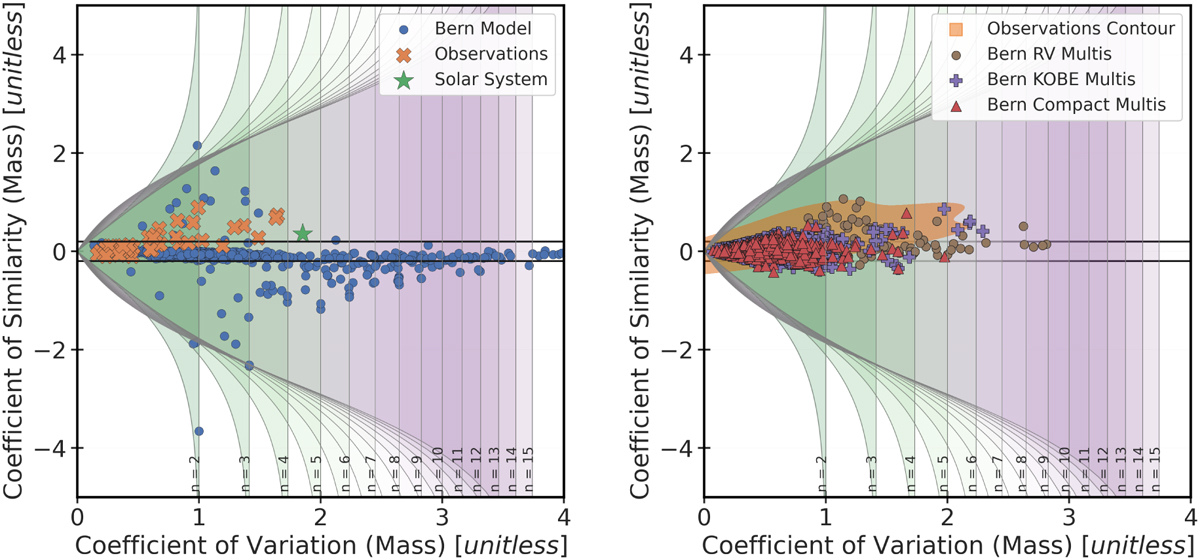Fig. 3

Download original image
New parameter space: architectures of planetary systems. Both panels shows the coefficient of similarity (mass) as a function of the coefficient of variation (mass). The shaded regions show the allowed parameter space for planetary systems. The white gaps (between two shaded regions) mark the mathematically forbidden regions of this architecture space. Different parts of this parameter space are identified with four architecture classes, in accordance with Eq. (3). Each point corresponds to an individual planetary system. For visual clarity, the shaded and unshaded regions are drawn only for systems hosting up to fifteen planets. Left: planetary systems from the Bern model and observations. Right: synthetically observed systems depicting the detection biases of radial velocity and transit surveys.
Current usage metrics show cumulative count of Article Views (full-text article views including HTML views, PDF and ePub downloads, according to the available data) and Abstracts Views on Vision4Press platform.
Data correspond to usage on the plateform after 2015. The current usage metrics is available 48-96 hours after online publication and is updated daily on week days.
Initial download of the metrics may take a while.


